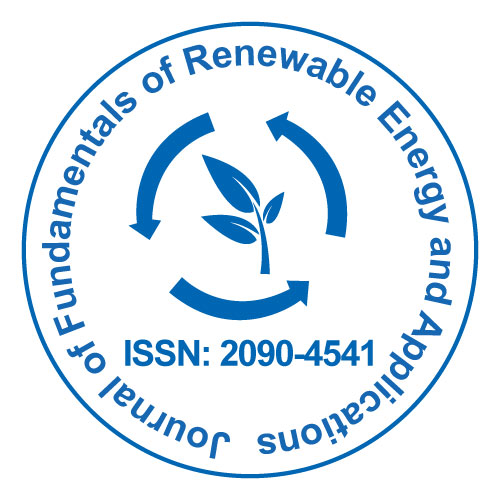
Journal of Fundamentals of Renewable Energy and Applications
Open Access
ISSN: 2090-4541

ISSN: 2090-4541
Opinion Article - (2024)Volume 14, Issue 4
Making the switch to renewable energy is more important than ever as the globe struggles with how urgent it is to solve climate change. Wind energy is one of the most important contributors to this change among the different renewable energy sources. A clean, sustainable, and more affordable substitute for fossil fuels is wind power, which uses the air's natural movement to create electricity. Wind energy has become one of the most potential ways to meet rising energy demands while reducing the environmental effects of conventional energy sources, thanks to technological improvements and a global shift towards decarbonization. The principles of wind power generating are not too complicated. Large blades affixed to tall towers make up wind turbines, which harness wind energy and transform it into electrical power. The efficiency of capturing wind energy increases with tower height and turbine blade size. Due to its abundance and widespread distribution, wind energy is a very scalable and adaptable power source. There are benefits and drawbacks to both onshore and offshore wind farm locations. Offshore wind farms, despite being more costly to construct, benefit from higher and more consistent wind speeds, which enable more energy output, whereas onshore wind farms are frequently more cost-effective due to simpler access and reduced installation costs.
The environmental impact of wind power is one of its main benefits. Wind energy generating does not emit any hazardous pollutants or emissions that contribute to climate change, in contrast to fossil fuels. Since wind energy doesn't emit sulfur dioxide, nitrogen oxides, or carbon dioxide into the environment, it is regarded as a "clean" source of electricity. In light of international initiatives to cut greenhouse gas emissions and move toward a low-carbon economy, this is especially crucial. A straight path to decarbonizing the electricity sector is provided by wind energy as the globe shifts away from coal, oil, and natural gas. In addition to its advantages for the environment, wind power has grown more affordable.
Technological developments have reduced the cost of wind turbines and related infrastructure within the last ten years. Modern turbines are now far more efficient, enabling more energy production at reduced costs. In many regions of the world, wind power is now among the least expensive ways to generate electricity, occasionally even surpassing more conventional fossil fuel-based power generation methods. As advancements in energy storage, grid connectivity, and turbine design increase wind power's economic feasibility, this trend is anticipated to continue.
A certain amount of energy security is another benefit of wind power. Wind energy is abundant and locally sourced in many areas, unlike fossil fuels that are prone to price fluctuation and geopolitical problems. Strong wind resources enable nations to lessen their reliance on imported fuels, enhancing domestic energy security and lowering their vulnerability to changes in the price of energy on international markets. By adding a domestic and renewable energy source to the mix, wind power can also assist diversify energy sources, stabilize power grids, and lower the danger of supply interruptions.
Wind power has a number of drawbacks despite its many advantages. One of the key issues in integrating wind energy into the grid is that wind is intermittent and can change based on weather patterns. However, this problem is being addressed by developments in energy storage technology, such as batteries and other grid-scale storage options, which enable excess energy produced during high wind periods to be stored and used during low wind periods. Furthermore, in some situations, the high upfront expenditures of offshore wind farms and the requirement for sizable land expanses for onshore wind farms may be limiting factors. However, in order to get over these obstacles and fully utilize wind power, research and development is still being conducted.
Citation: John R (2024). Transforming Energy Systems with Wind Power for Sustainability. J Fundam Renewable Energy Appl. 14:362.
Received: 29-Nov-2024, Manuscript No. JFRA-24-36231; Editor assigned: 02-Dec-2024, Pre QC No. JFRA-24-36231 (PQ); Reviewed: 16-Dec-2024, QC No. JFRA-24-36231; Revised: 23-Dec-2024, Manuscript No. JFRA-24-36231 (R); Published: 30-Dec-2024 , DOI: 10.35248/2090-4541.24.14.362
Copyright: © 2024 John R. This is an open-access article distributed under the terms of the Creative Commons Attribution License, which permits unrestricted use, distribution and reproduction in any medium, provided the original author and source are credited.